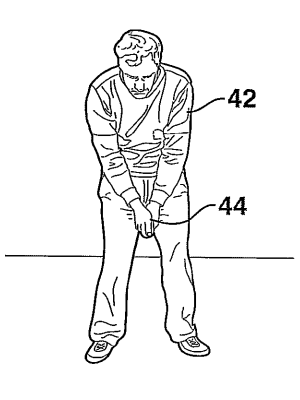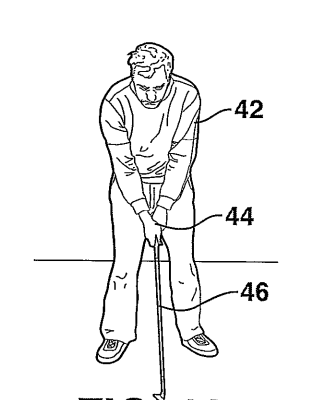The only case I am aware of where this came into play was in Lux Traffic Controls v Pike [1993] RPC 107 (unfortunately not freely available online), where Aldous J stated, "s. 1(2) of the Act comprises a non-exhaustive catalogue of matters or things which are not patentable. Although not specifically mentioned, I believe a method of controlling traffic as such is not patentable, whether or not it can be said to be a scheme for doing business. The field expressly excluded by the section concerns mere ideas not normally thought to be the proper subject for patents which are concerned with manufacturing" (paragraph 138).
Since 1993, however, the courts and the Patent Office / IPO have not seen the need to consider the words "among other things" in section 1(2) (equivalent to the words "in particular" in Article 52 EPC), probably because it is very rare that an otherwise patentable invention would not fall within one of the categories. A recent decision, BL O/028/12 (William Kostuj), from the IPO therefore grabbed my attention because it raises this issue, albeit only briefly.
The application, a UK national phase of an international application published as WO 2009/007918, related to a method of establishing a golfer’s grip and swing in order to change or improve the golfer’s performance, in which the golfer performed a swing using a grip with no club present (as in the images above), and the grip and swing were analyzed. Claim 1 of the application as filed read:
"A method of developing a golf swing and fitting/making golf equipment to said swing, comprising:
forming a secure golf grip using only a body's limbs, whereby a golf swing can be performed absent any extraneous, swing-influencing elements, including but not limited to golf clubs and other golf equipment;
developing a limb-only golf pre-swing and/or swing of any style using said golf grip, whereby said pre-swing and/or swing can be developed absent any extraneous, swing-influencing elements, including but not limited to golf clubs and other golf equipment, that can affect the movement(s) and/or position(s) of said pre-swing and/or swing;
fitting/making at least one golf club and/or other piece of golf equipment in accordance with the characteristic(s) of the developed pre-swing and/or swing, whereby at least one part and/or specification of the at least one golf club and/or other piece of golf equipment is selected and/or adjusted to reproduce the limb- only movement(s) and/or position(s) as accurately as possible when using the at least one golf club and/or other piece of golf equipment; and
further fitting/making said equipment by means of ball travel and/or other non- swing-influencing aspect(s) of golfing performance."The international searching authority (the Korean intellectual property office) considered there was no problem with the application, citing three background relevance documents and stating that the claimed invention was novel, inventive and possessed industrial application (raising some questions about either the competence of the Korean examiner or the popularity of golf in Korea). The UK examiner, however, objected that the invention was not patentable, lacked industrial application, sufficiency, novelty and inventive step, and had been amended to add matter. The applicant was unable to persuade the examiner, so a hearing was held.
The hearing officer focused on what were considered were the main issues to decide, namely whether the claims satisfied sections 1(2) and 14(3). In relation to sufficiency, the hearing officer noted that only a general paragraph provided support for one of the claims and no examples were provided of what might constitute activities other than golf, given that the claim in question was not limited to any particular activity. The claim was considered to be broad and speculative in scope and did not satisfy section 14(3). In relation to whether the claims were patentable, the hearing officer considered that the contribution provided by the claimed invention (following the four-step Aerotel/Macrossan test) was a method of producing a golf swing comprising, without the use of a golf club, forming a limb-only golf grip and performing a limb-only golf swing, using that as a reference for further improvements, the limb-only established swing being used for the fitting or making of golf equipment. This contribution was considered to be no more than a scheme for training an individual to improve their golf skills, and was therefore excluded as a method for playing a game. The contribution was also considered to be caught by the mental act exclusion, although this would not apply if any hardware was included. The contribution was further excluded as a method of doing business, since the activity lay in the business aspects of sport.
Although there were clearly plenty of grounds on which to refuse the application, the hearing officer also considered that the contribution could be caught under the phrase “among other things” in section 1(2), in the event that it was argued that the subject matter did not fall squarely within any one or combination of the specific excluded areas. The hearing officer stated:
"The structured process of establishing a limb-only swing, and using that as a basis for further improvements and/or fitting or making of sporting equipment such as golfing equipment is not, in my opinion, suitable subject matter for patent protection. In so far as it could be argued that this does not fall squarely within any one or combination of the specific excluded matters discussed earlier, I consider that the invention is very closely analogous to a scheme, rule or method of performing a mental act, playing a game or doing business and so would be caught under the phrase “among other things” in section 1(2)." (paragraph 41)
The contribution was further considered not to be technical, as it did not belong to any field of technology. The hearing officer did not feel the need to consider novelty, inventive step, clarity or added matter, although the invention was considered not to be one that could be made or used in any kind of industry and therefore lacked industrial application. The application was refused.


Dear Tufty Cat,
ReplyDeleteI read with interest your comment on the TKDL post on SpicyIP - would you be interested in doing a full-fledged guest post for us on the importance and relevance of the TKDL evidence to the eventual rejection of the claim? The TKDL has been very generous is appropriating a lot of credit for itself and it is time that someone audited their claims. Please do email me, if you are interested in doing a full fledged post: preddy85[@]gmail.com
I will not dwell much on the fact that the UKIPO is easily one of the worst intellectual property offices I have ever dealt with for numerous reasons, just one of them being among the comments in your post regarding the regulation or regulations against patenting improvements in games that the office generally uses at every opportunity to reject patents.
ReplyDeleteWhether accurate or not, I saw a survey a while back that the UK was number one in the world with respect to job dissatisfaction among its inhabitants, no real surprise there I guess with some of the rules, regulations, and protocols of its intellectual property office that sort of portrays certain cultural aspects. In the end, the UK will now forever and deservedly be known as the only nation applied to that did not issue a patent for one of the most important inventions in the history of the game of golf (a relatively recent different invention than the one written about in your particular post here), a game that is widely reported as ironically being "invented" within the very same nation.
Beyond that and more specifically to the point of this reply, the displays of the golfer swinging that you included in this post happen to be drawings of me swinging that were carefully done and paid for by me. In addition to being part of the patent application, the application's content was also copyrighted in the US as content that will also be used in future golf swing and/or clubfitting instruction and be an important part of that instruction above and beyond its use in the patent application.
I do not know the legalities of whether the UK is bound by such copyright registrations or whether you even care in the slightest one way or the other, but in just looking at it from a simple moral decency rather than legal perspective, what kind of person takes someone else's work, manipulates the way you did, and conspicuously displays it for your own benefit without bothering to ask permission from the original owner first? The fact that the application was published by law by an intellectual property office does not automatically mean that you are totally free to use any content within it for any purpose you wish (unless that is part of your culture also).
Well I will tell you what kind of person does that. The same kind of person that does not readily and visibly provide a contact address to contact the author directly (I certainly did not find one) so that such a matter might be discussed in private first. But I saw no other alternative than this, as I tried Google first and they refused to take any action toward removing it for what is a pretty blatant use of my intellectual property. I am not the least bit interested in having any of my images displayed within this particular work that apparently originates in the UK without substantial compensation, you have no permission to use any and did not bother to ask, and I would like every one of the images removed from this post immediately.
Thank you for your comment Mr Kostuj. The fact that your patent application was published and is freely available online (a link is provided in the post above) does mean that I am free to use its content, regardless of any copyright you may hold in the images. I will not therefore be removing the images. If you would like to engage in any further correspondence you are free to email me directly at tuftythecat@gmail.com
ReplyDelete